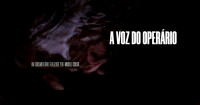A Voz do Operário Filming Locations

Where was A Voz do Operário filmed? A Voz do Operário was filmed in 1 locations across Portugal in the following places:
A Voz do Operário Filming Locations
Lisbon is Portugal’s hilly, coastal capital city. From imposing São Jorge Castle, the view encompasses the old city’s pastel-colored buildings, Tagus Estuary and Ponte 25 de Abril suspension bridge. Nearby, the National Azulejo Museum displays 5 centuries of decorative ceramic tiles. Just outside Lisbon is a string of Atlantic beaches, from Cascais to Estoril.
A Voz do Operário (2019)
The documentary made by Miguel Costa, which deals with the history of the Society of Instruction and Beneficence "A Voz do Operário" and its dimension in the present. In addition to a narrative evolution substantiated by testimonies and images, it also has several historical recreations demonstrating the work of tobacco workers and the foundation of the institution. "Voz do Operário" was formed at the end of the century. XIX by workers of the tobacco industry, with the intention of giving voice to the social problems of this class, namely through the creation of the homonyms newspaper. In a Portugal where 80% of the population was illiterate, the role of this society was decisive with regard to the creation of schools to teach the same workers, as well as their children. The long road traveled by "A Voz do Operário" to the present day, is characterized by several works related to social action, mutual ism and education, which are of enormous importance for the population of Lisbon. At this time, his fame is more linked to the so-called "modern teaching", practiced in its various schools, which have about 1500 students. Among the various actors participating in this documentary, Fernando Rosas, António Victorino D'Almeida, Rita Ferro Rodrigues, as well as the general director of "A Voz do Operário", his faculty and some former students. The documentary made by Miguel Costa, which deals with the history of the Society of Instruction and Beneficence "A Voz do Operário" and its dimension in the present. In addition to a narrative evolution substantiated by testimonies and images, it also has several historical recreations demonstrating the work of tobacco workers and the foundation of the institution.
